Who Really Won the $80 Million SOCOM Sniper Rifle Contract?
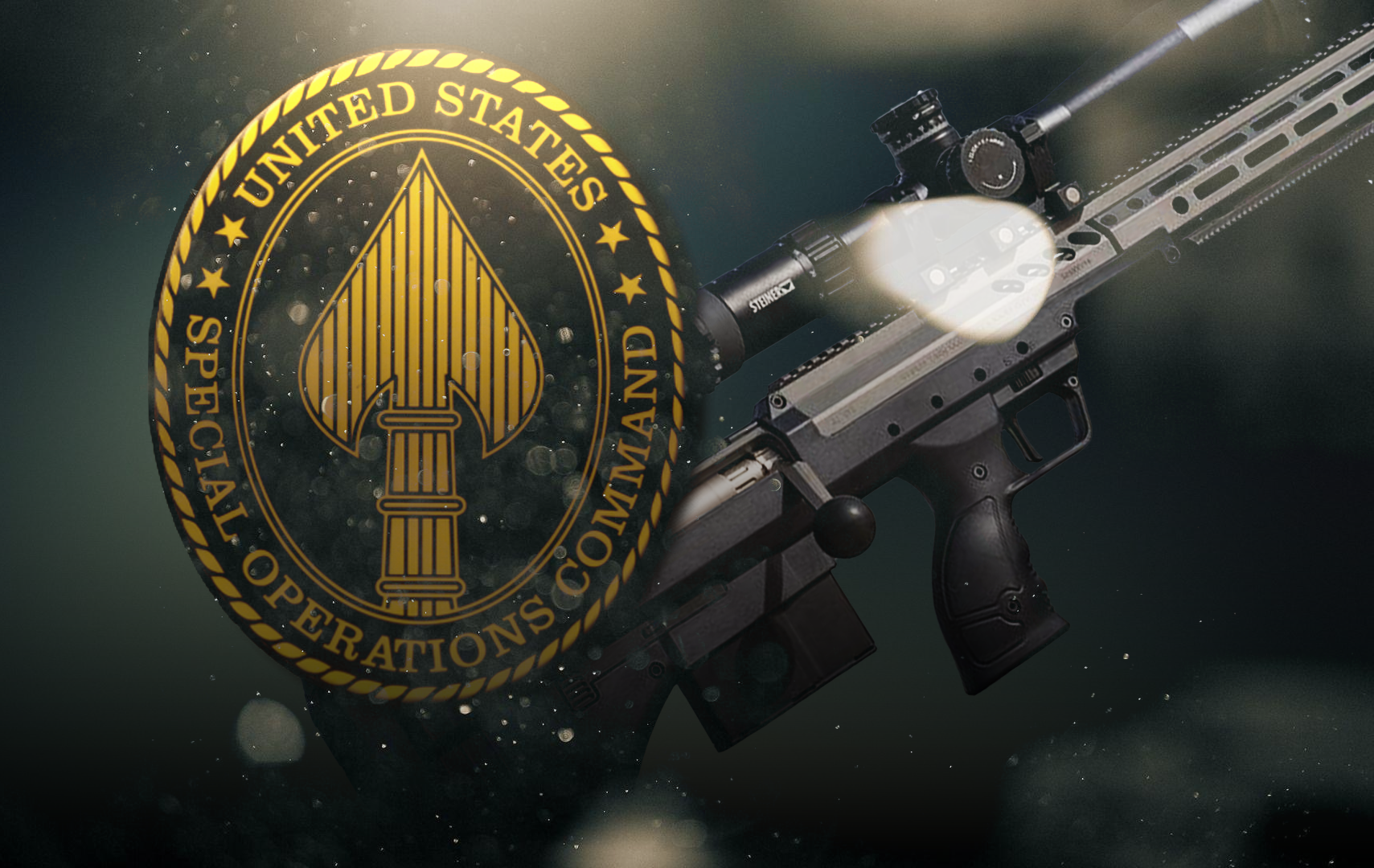
Who Really Won the $80 Million SOCOM Sniper Rifle Contract?
February 20, 2025
By
Nicholas Young
0 comment(s)
Imagine this: the world’s leading manufacturers, including Accuracy International, Barrett, FN, Sako, Remington, and Desert Tech, competing to replace the military’s aging bolt-action sniper rifles. For us, it wasn’t just about business—it was about redefining what a sniper rifle could do.
Our journey began with the release of the Desert Tech SRS (Stealth Recon Scout) sniper rifle, a groundbreaking design that forced U.S. SOCOM (Special Operations Command) to rewrite their wishlist. They demanded a rifle capable of hitting targets beyond 1,500 meters, equipped with full rail systems, multi-caliber capability, and a compact, transportable build. This wasn’t an upgrade; it was a revolution.
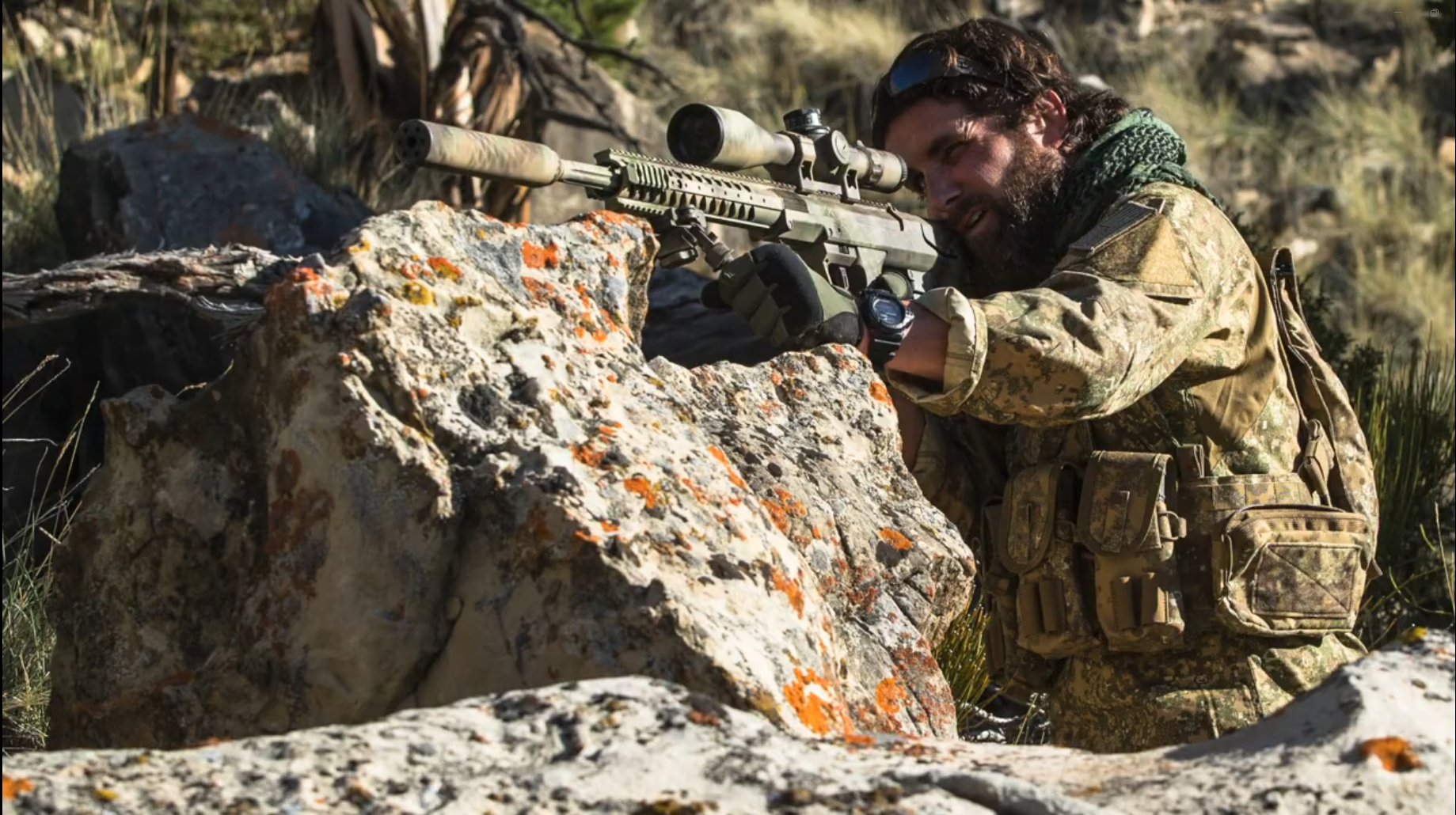

The First Round: Leading the Pack
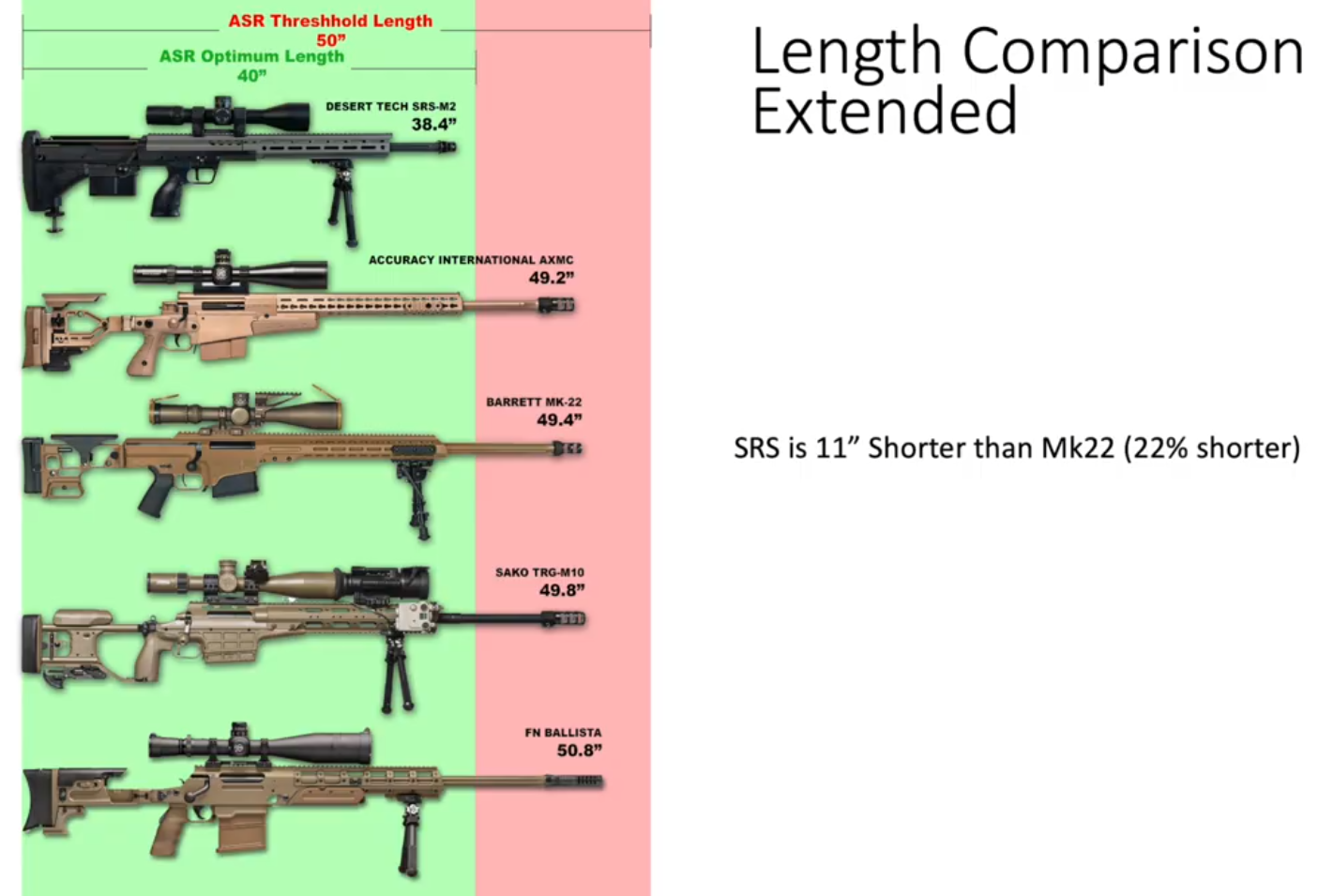

During initial testing, the SRS was a game-changer. Our SRS rifle was nailing it in the test, unofficially winning the first round. Our accuracy was unmatched. We were byfar the shortest being 11 inches shorter than everybody else. That made our SRS, with the silencer attached, 2 and 1/2 inches shorter than the other rifles with no silencer. We were byfar the lightest, being 5 lbs lighter than everybody else, which made our full system weight of the SRS with scope, bipod rings, sling, and silencer the same weight as their rifle naked with no attachments!
We were the only perfectly balanced rifle and byfar the most accurate, which was confirmed by three separate individuals who witnessed the testing. They (the individuals) reported that our 338 Norma Magnum shot 4 and 5 in groups at 500 meters, and our 338 Lapua shot 6 to 8 in groups at 1500 meters. The next most accurate rifle shot 10 to 12 in groups at 1500 meters. That's insane accuracy!
But here's where it gets crazy; they decided to disqualify the SRS because one of our rifles had a trigger that was 2 lbs out of spec, but the trigger is adjustable! The unofficial word is that the decision-makers didn't fancy adopting a bullpup rifle that had the action in the magazine behind the pistol grip, and so they threw out round one and we had to go through it all over again.
During initial testing, the SRS was a game-changer. Our SRS rifle was nailing it in the test, unofficially winning the first round. Our accuracy was unmatched. We were byfar the shortest being 11 inches shorter than everybody else. That made our SRS, with the silencer attached, 2 and 1/2 inches shorter than the other rifles with no silencer. We were byfar the lightest, being 5 lbs lighter than everybody else, which made our full system weight of the SRS with scope, bipod rings, sling, and silencer the same weight as their rifle naked with no attachments!
We were the only perfectly balanced rifle and byfar the most accurate, which was confirmed by three separate individuals who witnessed the testing. They (the individuals) reported that our 338 Norma Magnum shot 4 and 5 in groups at 500 meters, and our 338 Lapua shot 6 to 8 in groups at 1500 meters. The next most accurate rifle shot 10 to 12 in groups at 1500 meters. That's insane accuracy!
But here's where it gets crazy; they decided to disqualify the SRS because one of our rifles had a trigger that was 2 lbs out of spec, but the trigger is adjustable! The unofficial word is that the decision-makers didn't fancy adopting a bullpup rifle that had the action in the magazine behind the pistol grip, and so they threw out round one and we had to go through it all over again.
Round Two: A Missed Opportunity
Determined to keep going, we entered the second round of trials. Unfortunately, while I was out of the country, we missed a crucial notification. Remington ended up winning that round with their MSR rifle, but their victory was short-lived.
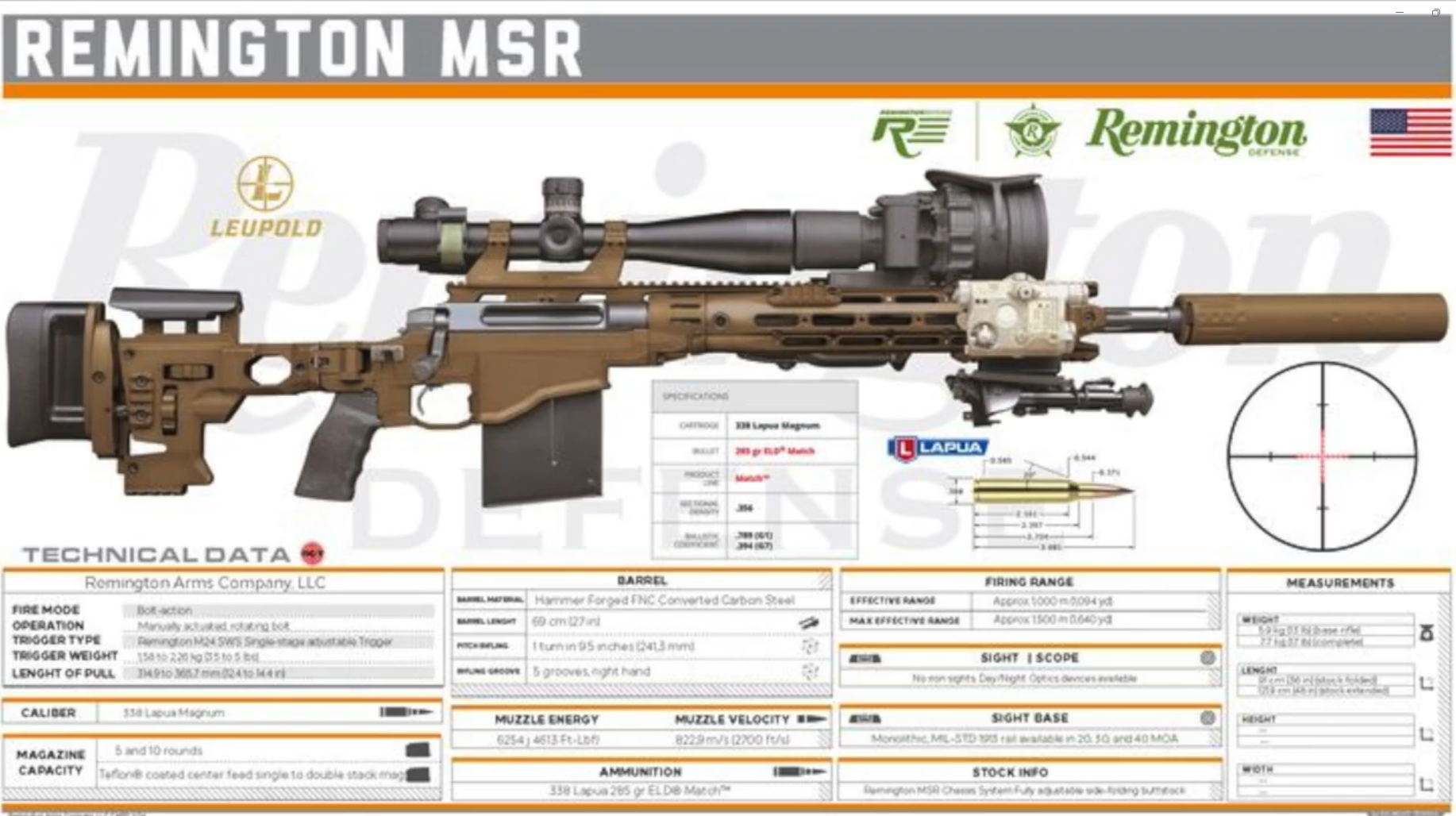

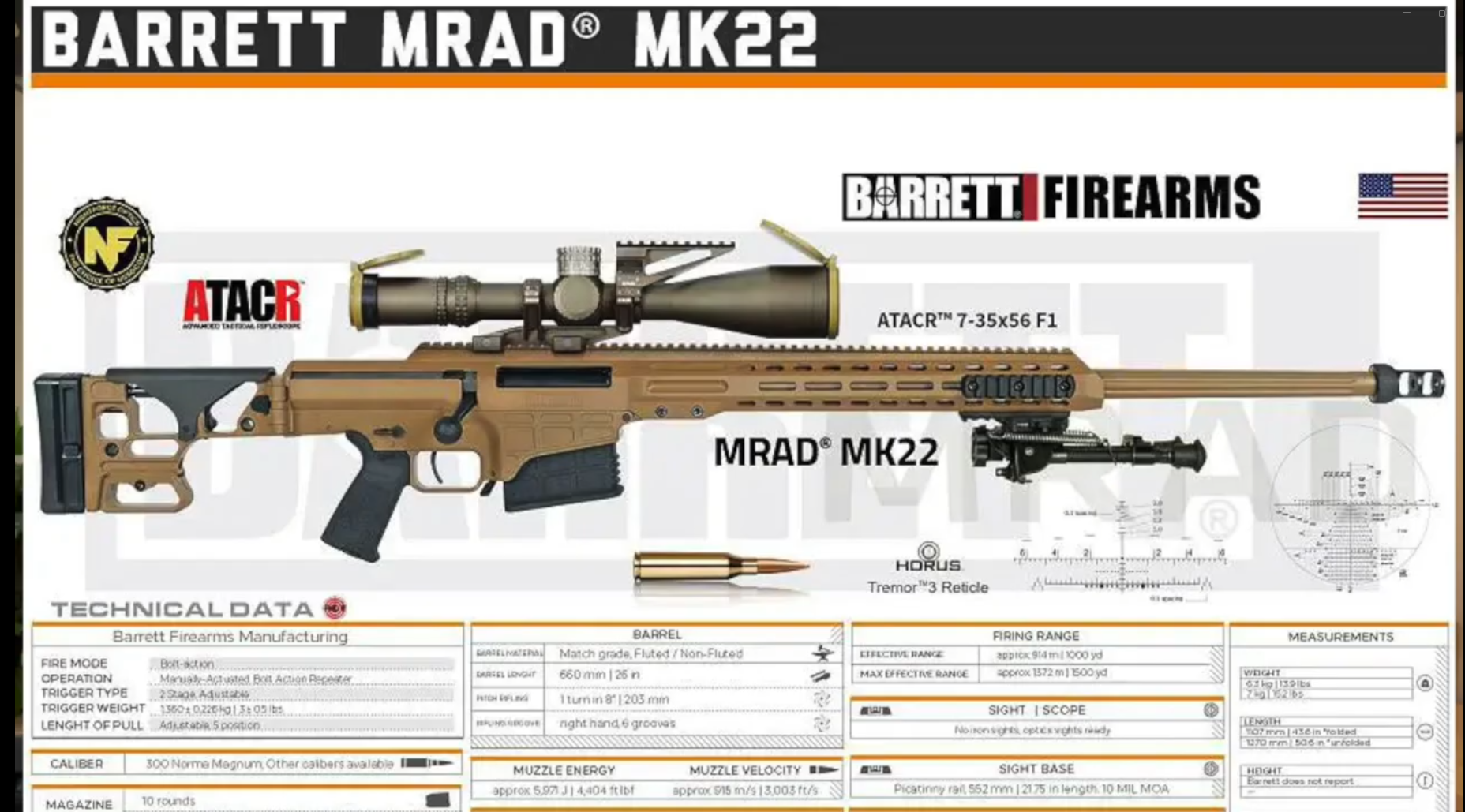

Remmington lost the contract later due to poor performance. A famous gun builder told me that he was hired to rebuild all of these MSR rifles, he had to put new barrels on them because they were terribly inaccurate and didn't return to zero and he drewed up the actions and did quite a lot of work to try to fix these guns. It was a roller coaster with missed deadlines and changing requirements, and new competition like Barrett arriving with their new MRAD rifle.
The Final Round: Changing the Game
By the third round, the requirements shifted yet again. This time, rifles with more traditional bolt placements were favored, effectively disqualifying the SRS. Despite this, our rifle remained a standout in terms of accuracy, weight, and balance. Ultimately, Barrett won the contract with their MRAD MK22 rifle, but the journey was nothing short of extraordinary.
Our SRS was a beast thoughout the whole ordeal. It was more accurate, lighter, shorter, and more balanced than the rest. But changes in the third round requirements again disqualified the SRS from competing. The new requirements wanted the bolt to be more forward in the conventional location CU they didn't believe that operators could cycle the action without taking their head off the rifle. But with training however, you can see it's very easy to do that.
The Legacy of the SRS
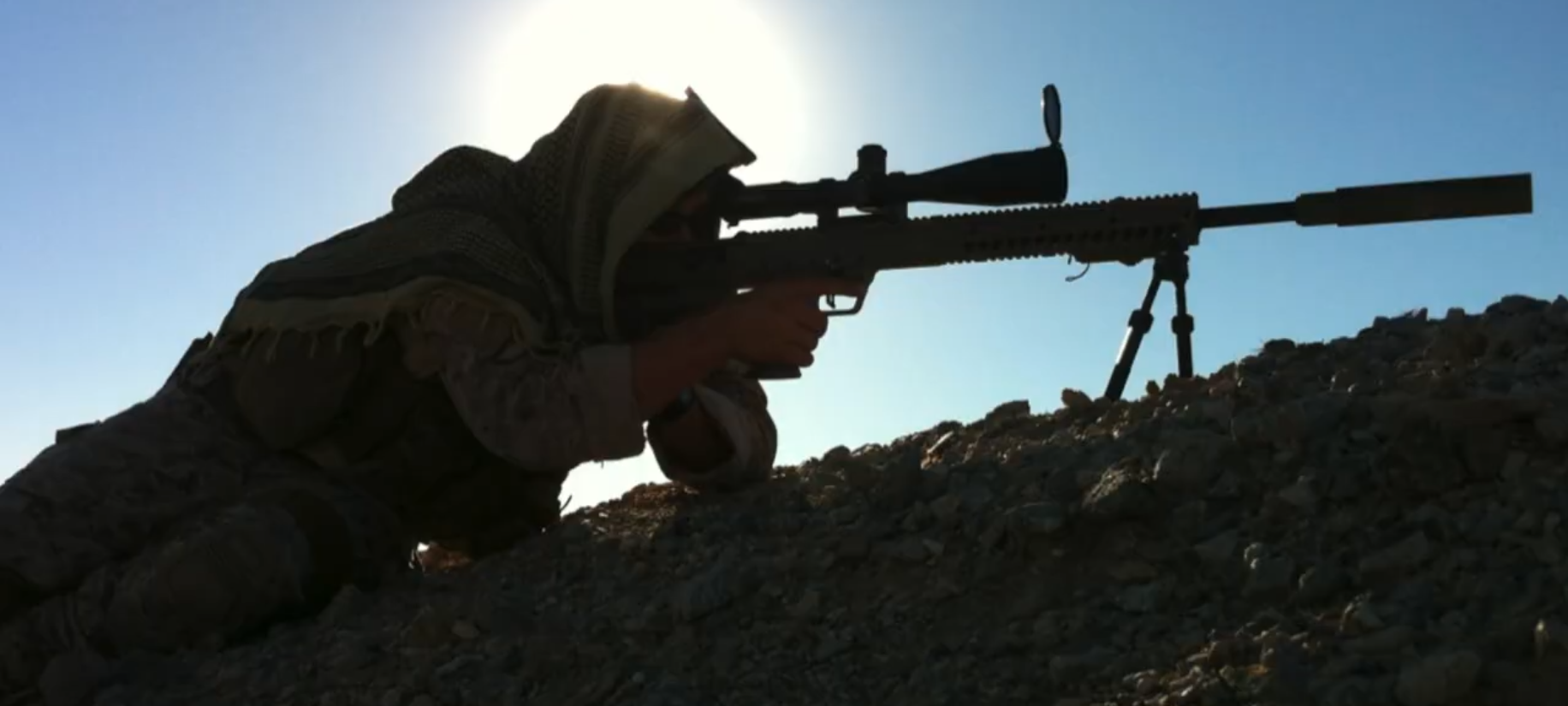

In the end, Barrett won it with their MRAD rifle, but the journey there was absolutely absolutely wild. While we didn’t win the contract, the SRS outperformed in so many ways, proving itself as a technological marvel. Its compact design, incredible accuracy, and innovative features set new benchmarks in sniper rifle performance.
I want to hear your thoughts. Which rifle do you think should have won? If you’re as fascinated by sniper technology as I am, check out my next post where I’ll dive into how I started Desert Tech. Until next time, aim small, miss small.
